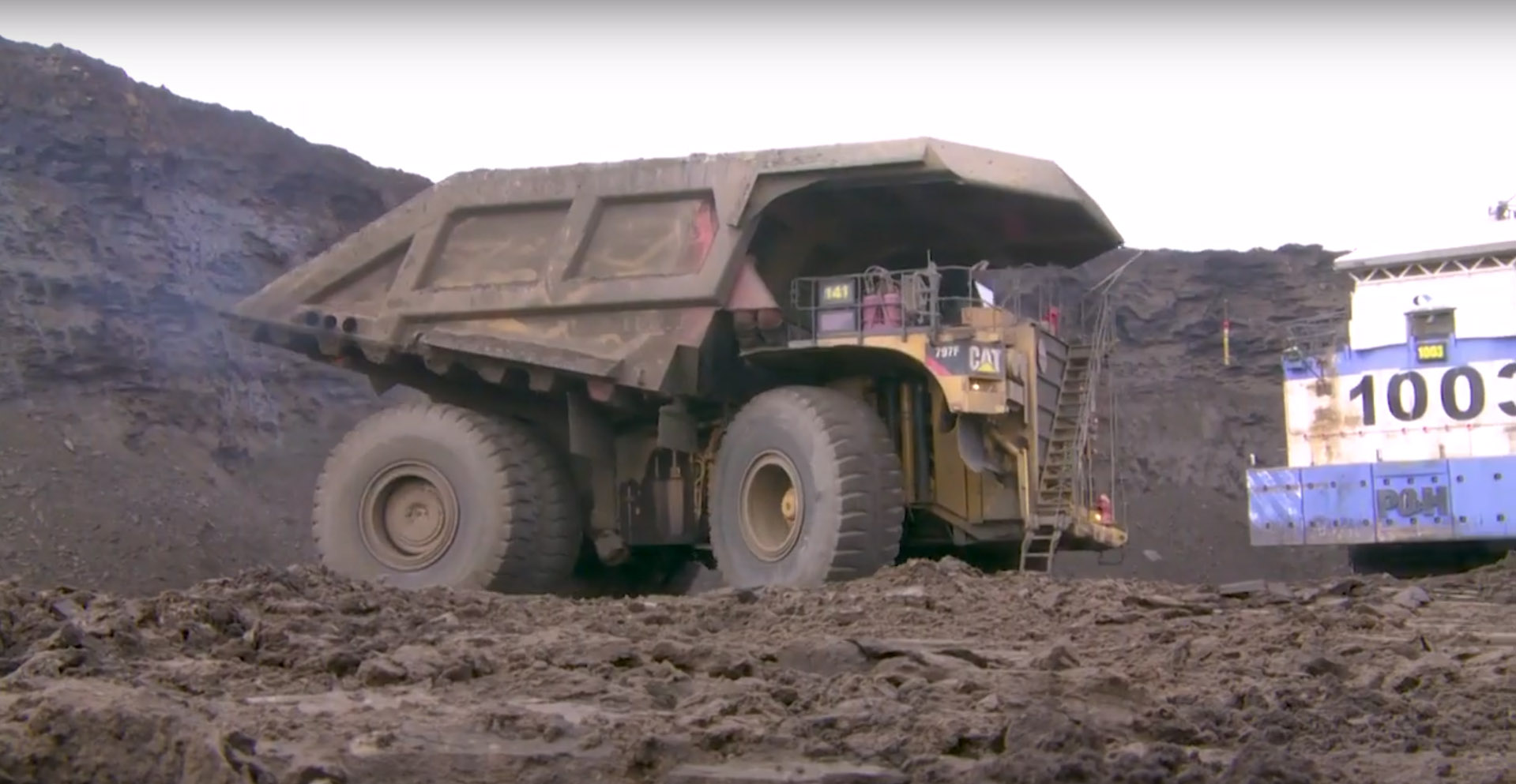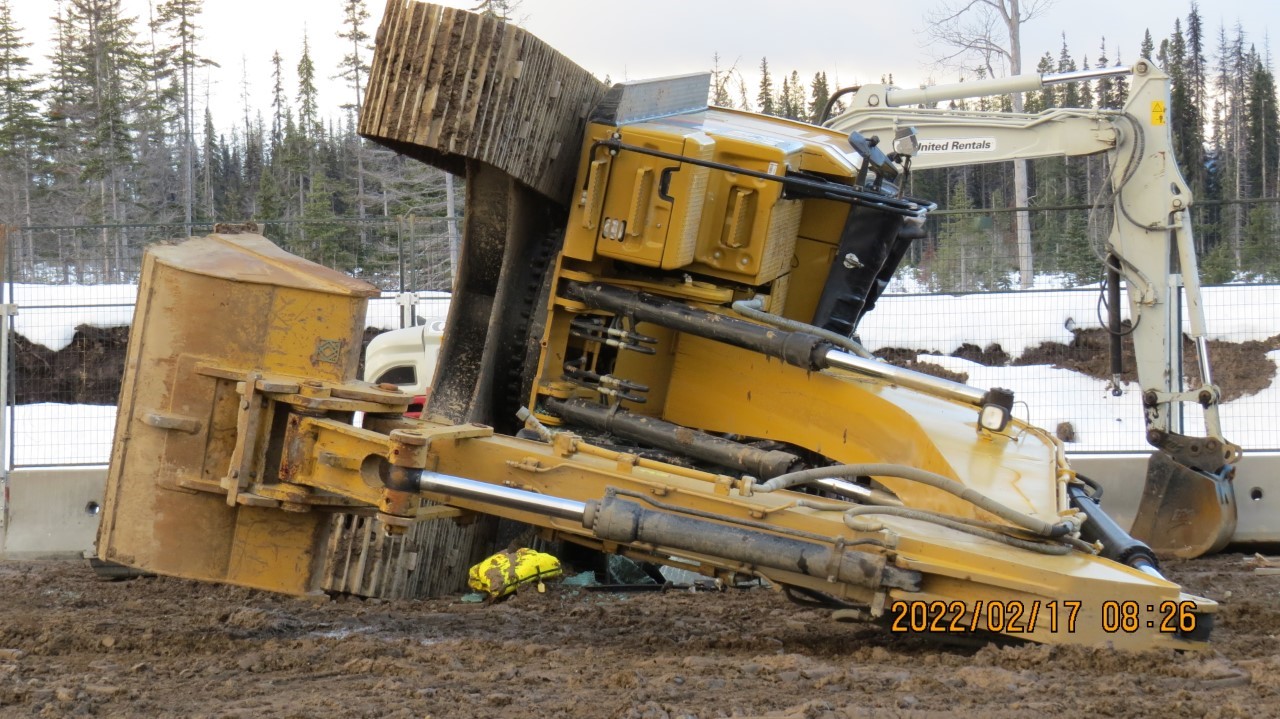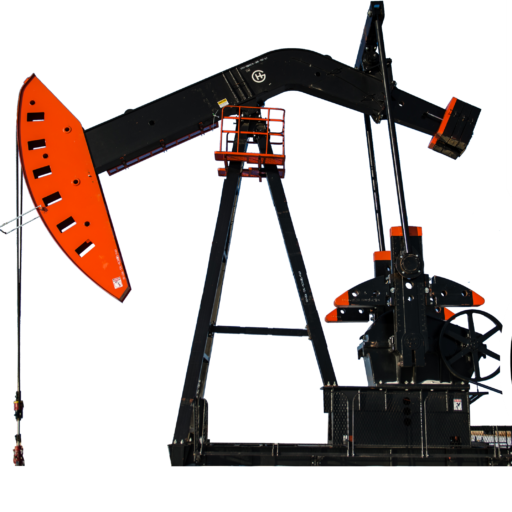
Rail blockades. Photo by The Canadian Press.
It’s time to mount a more effective defense
This column is the first in a series of four that will assess ways to improve perceptions about Western Canada’s fossil fuel industry among policy makers and the wider public. This column acknowledges past mistakes and looks at some industry analysts’ insights about what’s gone so badly wrong in the recent past. In subsequent columns we’ll look at ideas for increasing support for the industry and reducing the impact of its critics.
The international environmental movement along with sympathetic Canadian and US politicians won many of the key battles involving energy policy and climate change over the past ten years. No less troubling is the fact that Western Canada’s energy industry and the governments of the producing provinces failed to put up much of a fight. Between 2015 and 2021, the energy industry had three major pipeline projects derailed, a ban on West Coast tanker traffic was imposed, and new development approval rules essentially foreclosed on future efforts to get Canadian oil to tidewater.
Despite past failures, there is still an opportunity to mount a more formidable defense in the climate and energy policy battles to come. It helps that opponents of fossil fuels and modern agriculture in Ottawa have already shown their hand. Their wish list includes the elimination of fossil fuel in electrical power generation, the mass adoption of electric vehicles, carbon taxes and restrictions on the use of nitrogen fertilizer. One step toward ensuring a more sensible pace of change than the rush to ruin proposed by the federal government is sharpening our understanding of why things went so wrong for the energy industry over the past decade. A brief review might remind us (as if we need reminding) that Western Canada’s fossil fuel industry and the governments of the energy producing provinces need to embrace new ways of shaping public opinion and influencing political decision making.
On the bright side, progress has been made when it comes to analyzing how and why things went sideways. For example, we now know that the roots of the setbacks experienced during the 2015-2021 period extend back at least to 2006. That was when the environmental movement conceived its well-financed and ultimately successful crusade to discredit Alberta’s oil industry. No less damaging to Western Canada’s energy industry was its own feckless response to the challenge. The postmortem provided in David Yager’s book From Miracle to Menace, indicates that while the environmental movement was busy winning the public relations and public policy advocacy campaign, Alberta’s oil industry and provincial government were asleep at the wheel.

Alberta media columnist, Licia Corbella, came to much the same conclusion. In a 2019 op-ed she succinctly summed up what had and hadn’t happened:
“Lies and smears have been spread around the world about how damaging Alberta’s oil sands are to the existence of our planet. The response over all of those years by the Alberta government and, worse yet, the energy industry? Silence. Crickets. A veritable black hole of a response.”
- 0098 SASPO-2874_Self Serve Campaign_New Connects_Youtube_v30098 SASPO-2874_Self Serve Campaign_New Connects_Youtube_v3
- 0100 Turnbull Project Manager0100 Turnbull Project Manager
- 0099 Mryglod Steel 1080p0099 Mryglod Steel 1080p
- 0097 Eagle Sky Ventures LTD0097 Eagle Sky Ventures LTD
- 0095 Fast Trucking nearly 70 years good at it0095 Fast Trucking nearly 70 years good at it
- 0053 Kingston Midstream Westspur Alameda Click Before You Dig0053 Kingston Midstream Westspur Alameda Click Before You Dig
- 0092 Turnbull projects big and small0092 Turnbull projects big and small
- 0046 City of Estevan This is Estevan Teaser0046 City of Estevan This is Estevan Teaser
- 0087 Lori Carr Coal Expansion0087 Lori Carr Coal Expansion
- 0077 Caprice Resources Stand Up For Free Speech0077 Caprice Resources Stand Up For Free Speech
- 0076 Latus only0076 Latus only
- 0061 SIMSA 2024 For Sask Buy Sask0061 SIMSA 2024 For Sask Buy Sask
- 0055 Smart Power Be Smart with your Power office0055 Smart Power Be Smart with your Power office
- 0051 JML Hiring Pumpjack assembly0051 JML Hiring Pumpjack assembly
- 0049 Scotsburn Dental soft guitar0049 Scotsburn Dental soft guitar
- 0041 DEEP Since 2018 now we are going to build0041 DEEP Since 2018 now we are going to build
- 0032 IWS Summer hiring rock trailer music
- 0022 Grimes winter hiring
- 0021 OSY Rentals S8 Promo
- 0018 IWS Hiring Royal Summer
- 0013 Panther Drilling PO ad 03 top drive rigs
- 0006 JK Junior
- 0002 gilliss casing services0002 gilliss casing services
- 9002 Pipeline Online 30 sec EBEX9002 Pipeline Online 30 sec EBEX
- 9001
The 2021 Allan Report, commissioned by the Kenney government to figure out what went wrong and what to do about it, documents the origins of the Anti-Alberta Energy Campaign. Allan shows how a collection of environmental non-governmental organizations (ENGOs) with funding from the Rockefeller Brothers Fund financed the development of the Alberta-bashing strategy. The actual planning was hired out to a group called CorpEthics and the execution of the plan was assigned to an international coalition of ENGOs. A secret central command structure was given responsibility overall coordination.
Yager describes how the oil industry had become complacent about public opinion during the late 20th century. It was no secret that many people disliked big oil. People thought it was too big, too politically powerful and made too much money while greedily manipulating consumer prices. But the industry could afford to be somewhat ambivalent about its public image because most people and governments still realized they needed the energy; especially during the supply shortfalls and price spikes of the mid-1970s and early 1980s. Back in those days environmental organizations went after the industry over oil spills and blamed fossil fuel consumption for generic air pollution. At that time ENGOs lacked the power they would come to wield in the 2000s. Furthermore, climate change and the role of fossil fuels in producing greenhouse gas emissions only started to appear on the environmental movement’s radar in the 1990s.
By the turn of the 21st century, the environmental movement was experiencing exponential growth in public support and could muster the financial resources required to wage highly effective awareness and advocacy campaigns. By the time they decided to wage a public relations war on the oil sands, environmental organizations like Greenpeace and the Sierra Club had armies of professional staff who were expert at fundraising, shaping public opinion, social media manipulation and litigation. Much of this growing persuasive power was devoted to fighting climate change and emissions generating industries.
Yet questions remain as to exactly why the environmental movement adopted the demonization of Alberta’s oil sands as a cause célèbre. Why did the ENGOs focus on Canadian oil as opposed to fracking in the eastern US, offshore drilling in the Gulf of Mexico or the Arctic Ocean? Why was oil produced by blood-soaked autocrats who stole their people blind seemingly okay, but Canadian oil was irredeemably bad? We’ll be exploring some of the more plausible answers in an upcoming column in this series. The Allan Report suggests, somewhat simplistically, that Alberta’s industry painted a target on its own back by making a public relations faux pas that will be described later in this article.
- 0098 SASPO-2874_Self Serve Campaign_New Connects_Youtube_v30098 SASPO-2874_Self Serve Campaign_New Connects_Youtube_v3
- 0100 Turnbull Project Manager0100 Turnbull Project Manager
- 0099 Mryglod Steel 1080p0099 Mryglod Steel 1080p
- 0097 Eagle Sky Ventures LTD0097 Eagle Sky Ventures LTD
- 0095 Fast Trucking nearly 70 years good at it0095 Fast Trucking nearly 70 years good at it
- 0053 Kingston Midstream Westspur Alameda Click Before You Dig0053 Kingston Midstream Westspur Alameda Click Before You Dig
- 0092 Turnbull projects big and small0092 Turnbull projects big and small
- 0046 City of Estevan This is Estevan Teaser0046 City of Estevan This is Estevan Teaser
- 0087 Lori Carr Coal Expansion0087 Lori Carr Coal Expansion
- 0077 Caprice Resources Stand Up For Free Speech0077 Caprice Resources Stand Up For Free Speech
- 0076 Latus only0076 Latus only
- 0061 SIMSA 2024 For Sask Buy Sask0061 SIMSA 2024 For Sask Buy Sask
- 0055 Smart Power Be Smart with your Power office0055 Smart Power Be Smart with your Power office
- 0051 JML Hiring Pumpjack assembly0051 JML Hiring Pumpjack assembly
- 0049 Scotsburn Dental soft guitar0049 Scotsburn Dental soft guitar
- 0041 DEEP Since 2018 now we are going to build0041 DEEP Since 2018 now we are going to build
- 0032 IWS Summer hiring rock trailer music
- 0022 Grimes winter hiring
- 0021 OSY Rentals S8 Promo
- 0018 IWS Hiring Royal Summer
- 0013 Panther Drilling PO ad 03 top drive rigs
- 0006 JK Junior
- 0002 gilliss casing services0002 gilliss casing services
- 9002 Pipeline Online 30 sec EBEX9002 Pipeline Online 30 sec EBEX
- 9001
The ENGOs understood that by the 2010s social media had become highly influential in shaping the opinions of hundreds of millions of users. Yager claims that while the environmental movement was skillfully incorporating social media into their campaign strategies, the leadership of the energy industry remained stuck in the past employing traditional media advertising. Perhaps they still thought all advertising was done best on television. Maybe they still thought political advocacy and lobbying occurred primarily at the golf course and during three martini lunches. Whatever the cause, they were apparently comfortable working with the Mad Men who learned everything they knew about advertising and advocacy campaigns in the 1960s and 70s. When they eventually discovered the internet they had no idea what to do with it. They stuck with what they knew and might just as well have been communicating with homing pigeons.
Becoming overconfident in response to good economic times may indeed be a common character trait of Prairie people. We’ve lived with cyclical booms and busts for over a century but somehow the heartbreak of the last bust gets forgotten during the excitement of the next boom. This tendency seems to affect people involved in both agriculture and the energy business.
Albertans had a lot to feel good about during the decade from 2004 until the fall of 2014. With the notable exception of a collapse in oil prices associated with the global financial crisis in 2008, prices trended mostly upward. Confidence was high in June of 2014 when WTI was selling for US $107 per barrel (in chained 2012 US$) The next bust, sparked by the Saudis’ decision to increase production and thereby reduce world prices, wasn’t clearly underway until early 2015.
- 0098 SASPO-2874_Self Serve Campaign_New Connects_Youtube_v30098 SASPO-2874_Self Serve Campaign_New Connects_Youtube_v3
- 0100 Turnbull Project Manager0100 Turnbull Project Manager
- 0099 Mryglod Steel 1080p0099 Mryglod Steel 1080p
- 0097 Eagle Sky Ventures LTD0097 Eagle Sky Ventures LTD
- 0095 Fast Trucking nearly 70 years good at it0095 Fast Trucking nearly 70 years good at it
- 0053 Kingston Midstream Westspur Alameda Click Before You Dig0053 Kingston Midstream Westspur Alameda Click Before You Dig
- 0092 Turnbull projects big and small0092 Turnbull projects big and small
- 0046 City of Estevan This is Estevan Teaser0046 City of Estevan This is Estevan Teaser
- 0087 Lori Carr Coal Expansion0087 Lori Carr Coal Expansion
- 0077 Caprice Resources Stand Up For Free Speech0077 Caprice Resources Stand Up For Free Speech
- 0076 Latus only0076 Latus only
- 0061 SIMSA 2024 For Sask Buy Sask0061 SIMSA 2024 For Sask Buy Sask
- 0055 Smart Power Be Smart with your Power office0055 Smart Power Be Smart with your Power office
- 0051 JML Hiring Pumpjack assembly0051 JML Hiring Pumpjack assembly
- 0049 Scotsburn Dental soft guitar0049 Scotsburn Dental soft guitar
- 0041 DEEP Since 2018 now we are going to build0041 DEEP Since 2018 now we are going to build
- 0032 IWS Summer hiring rock trailer music
- 0022 Grimes winter hiring
- 0021 OSY Rentals S8 Promo
- 0018 IWS Hiring Royal Summer
- 0013 Panther Drilling PO ad 03 top drive rigs
- 0006 JK Junior
- 0002 gilliss casing services0002 gilliss casing services
- 9002 Pipeline Online 30 sec EBEX9002 Pipeline Online 30 sec EBEX
- 9001
And, while Albertans were basking in the relatively good economic times from 2004-2015, the environmental movement was busy clobbering the international image of its oil patch.

A haul truck and shovel at CNRL’s oil sands operation in northern Alberta. Screenshot/YouTube/Canadian Natural
The Allan Report identified Alberta’s exhibit at the 2006 Smithsonian Museum’s Folklife Festival in Washington, D.C. as a seminal event that symbolized how poorly Albertans understood their public relations vulnerabilities. Alberta’s festival appearance coincided with, and may well have triggered, the launch of the Anti-Alberta Energy Campaigns. The festival was tailor-made for PBS television fans – a showcase for Celtic dancers, bluegrass bands and quilters. The Alberta government’s exhibit, a 180-ton ore truck of the type used in oil sands mining, was a poor fit. Allan suggests putting tone-deaf, in your face machismo on full display was the sort of over-the-top hubris that invited negative attention from the environmental movement. ENGOs, like Greenpeace, reveled in the attention they could get and money they could raise taking on the arrogant and powerful. After all, Greenpeace originally rose to fame and fortune by physically confronting the French navy over nuclear weapons tests in the Pacific Ocean.
Albertans have a lot to be proud of when it comes to their development and management of the oil sands. That being said, there’s always a danger that excessive pride will morph into debilitating overconfidence. The result in Alberta’s case was that their success helped make industry and the provincial government oblivious to the fact the environmentalists were going to clean their clocks. Furthermore, the ENGOs had the cash and the organizational heft required to do it.

Minister of Environment and Climate Change Steven Guilbeault is seen during a news conference in Ottawa, Thursday, Sept. 15, 2022. THE CANADIAN PRESS/Adrian Wyld
There is no getting around the fact that the environmental movement mounted a strategically brilliant awareness and advocacy campaign with all the requisite bells and whistles. They made effective use of modern forms of media; especially social media. For decades, the big environmental organizations had been honing their expertise in getting public attention. In the 1970s Greenpeace turned media stunting into an art form. They sailed their inflatable boats between giant commercial whaling ships and whales. They bravely buzzed French Frigates trying to test nuclear bombs. Steven Guilbeault, currently Canada’s Minister of Environment and Climate Change, became a media star for scaling tall buildings on behalf of Greenpeace. Furthermore, the environmental movement didn’t shy away from civil disobedience including the blocking Canada’s major railways and highways.
- 0098 SASPO-2874_Self Serve Campaign_New Connects_Youtube_v30098 SASPO-2874_Self Serve Campaign_New Connects_Youtube_v3
- 0100 Turnbull Project Manager0100 Turnbull Project Manager
- 0099 Mryglod Steel 1080p0099 Mryglod Steel 1080p
- 0097 Eagle Sky Ventures LTD0097 Eagle Sky Ventures LTD
- 0095 Fast Trucking nearly 70 years good at it0095 Fast Trucking nearly 70 years good at it
- 0053 Kingston Midstream Westspur Alameda Click Before You Dig0053 Kingston Midstream Westspur Alameda Click Before You Dig
- 0092 Turnbull projects big and small0092 Turnbull projects big and small
- 0046 City of Estevan This is Estevan Teaser0046 City of Estevan This is Estevan Teaser
- 0087 Lori Carr Coal Expansion0087 Lori Carr Coal Expansion
- 0077 Caprice Resources Stand Up For Free Speech0077 Caprice Resources Stand Up For Free Speech
- 0076 Latus only0076 Latus only
- 0061 SIMSA 2024 For Sask Buy Sask0061 SIMSA 2024 For Sask Buy Sask
- 0055 Smart Power Be Smart with your Power office0055 Smart Power Be Smart with your Power office
- 0051 JML Hiring Pumpjack assembly0051 JML Hiring Pumpjack assembly
- 0049 Scotsburn Dental soft guitar0049 Scotsburn Dental soft guitar
- 0041 DEEP Since 2018 now we are going to build0041 DEEP Since 2018 now we are going to build
- 0032 IWS Summer hiring rock trailer music
- 0022 Grimes winter hiring
- 0021 OSY Rentals S8 Promo
- 0018 IWS Hiring Royal Summer
- 0013 Panther Drilling PO ad 03 top drive rigs
- 0006 JK Junior
- 0002 gilliss casing services0002 gilliss casing services
- 9002 Pipeline Online 30 sec EBEX9002 Pipeline Online 30 sec EBEX
- 9001
ENGOs had the cash to buy all the legal advice they needed to defend against lawsuits and to file their own SLAPP suits against oil companies and governments that might dare to sue them. Anti-Alberta Energy campaigners organized and financed numerous lawsuits including one on behalf of a group of mothers from Colorado who wanted to sue Alberta and companies operating in the oil sands for harming their children’s future by ruining the climate. Licia Corbella reported that in one of the lawsuits Greenpeace “argued in court documents that using lies to further its agenda while damaging legitimate businesses should be allowed under its right to freedom of expression.”

Toppled excavator, the result of a violent assault at a Coastal GasLink pipeline site in February, 2022. Photo courtesy Coastal GasLink
The Allan Report was maligned in the Alberta media for spending $3.5 million to study the Anti-Alberta Energy Campaigns. Part of the report’s mission was to determine the level of foreign financing received by Canadian environmental charities. Ironically, among the findings unearthed by Allan’s forensic accounting efforts was that Canadian environmental organizations, most of whom were involved in the Anti-Alberta Energy Campaigns, received at least $925 million in grants and donations from foreign sources, mainly US backers, between 2003 and 2019. Combined with the money raised in Canada in support of the Anti-Alberta Energy Campaigns we can reasonably surmise that as much $1 billion was available to the environmental movement for its efforts to discredit and damage western Canada’s oil industry.
One has to ask, if we are wringing our hands over spending a few million on research essential to mounting a better defense, how serious can we really be about winning the next round in the game?
Licia Corbella claimed that when Alberta’s oil sands operators finally decided to do something in response to the campaign against them it was counter-productive. According to Corbella, “Major oil players in Alberta actually helped fund the smears against them by sending tens of thousands of dollars annually to the likes of the David Suzuki Foundation, The Pembina Institute and even Greenpeace.”
- 0098 SASPO-2874_Self Serve Campaign_New Connects_Youtube_v30098 SASPO-2874_Self Serve Campaign_New Connects_Youtube_v3
- 0100 Turnbull Project Manager0100 Turnbull Project Manager
- 0099 Mryglod Steel 1080p0099 Mryglod Steel 1080p
- 0097 Eagle Sky Ventures LTD0097 Eagle Sky Ventures LTD
- 0095 Fast Trucking nearly 70 years good at it0095 Fast Trucking nearly 70 years good at it
- 0053 Kingston Midstream Westspur Alameda Click Before You Dig0053 Kingston Midstream Westspur Alameda Click Before You Dig
- 0092 Turnbull projects big and small0092 Turnbull projects big and small
- 0046 City of Estevan This is Estevan Teaser0046 City of Estevan This is Estevan Teaser
- 0087 Lori Carr Coal Expansion0087 Lori Carr Coal Expansion
- 0077 Caprice Resources Stand Up For Free Speech0077 Caprice Resources Stand Up For Free Speech
- 0076 Latus only0076 Latus only
- 0061 SIMSA 2024 For Sask Buy Sask0061 SIMSA 2024 For Sask Buy Sask
- 0055 Smart Power Be Smart with your Power office0055 Smart Power Be Smart with your Power office
- 0051 JML Hiring Pumpjack assembly0051 JML Hiring Pumpjack assembly
- 0049 Scotsburn Dental soft guitar0049 Scotsburn Dental soft guitar
- 0041 DEEP Since 2018 now we are going to build0041 DEEP Since 2018 now we are going to build
- 0032 IWS Summer hiring rock trailer music
- 0022 Grimes winter hiring
- 0021 OSY Rentals S8 Promo
- 0018 IWS Hiring Royal Summer
- 0013 Panther Drilling PO ad 03 top drive rigs
- 0006 JK Junior
- 0002 gilliss casing services0002 gilliss casing services
- 9002 Pipeline Online 30 sec EBEX9002 Pipeline Online 30 sec EBEX
- 9001
Corbella concluded that appeasement didn’t work out any better for Alberta’s oil industry than it did for Neville Chamberlain in the late 1930s.
The sad facts are that the environmentalists were critically influential in several of the important political battles that damaged western Canada’s energy sector. They were successful because they designed and conducted effective public awareness and advocacy campaigns. And, they were able to channel that awareness into a tsunami of public opinion that online influencers, traditional news media and politicians couldn’t ignore. They were unintentionally aided and abetted by energy industry leaders and provincial governments that failed to fully appreciate what was happening to them.
That being said, the environmental movement is not omnipotent. It has weaknesses that can be exploited. Furthermore, supporters of the fossil fuel industry and a more rational, sensibly-paced transition to renewables have the capacity to learn from the past and adopt new forms of persuasion and public influence.
The next column in this series will discuss how the environmental movement went from a loose coalition of tree-hugging hippies to become “Big Green” – a powerful, well-financed movement with the ability to shape mass opinion and public policy. One of the more apt conclusions of the unfairly maligned Allan Report is how the environmental movement has become an industry unto itself. The movement is led by well-paid professional oligarchies that can be as much or more concerned with advancing their own self-interest than they are worried about protecting the environment. We’ll examine Big Green’s structural vulnerabilities and consider an approach that would allow us to turn its perceived strengths against it.
In the third column we’ll look at some of the new research on the role of social media in shaping and polarizing public opinion. This will include ideas about how social media fostered the growth of the so-called “woke,” world view. “Wokeness” is used here to refer to a constellation of ideas which includes apocalyptic visions of climate change and how greenhouse gasses generated by fossil fuels and hamburgers are “irreparably harming” the planet.
The concluding column will discuss new ideas for designing and waging campaigns that can influence public opinion and public policy.
- 0098 SASPO-2874_Self Serve Campaign_New Connects_Youtube_v30098 SASPO-2874_Self Serve Campaign_New Connects_Youtube_v3
- 0100 Turnbull Project Manager0100 Turnbull Project Manager
- 0099 Mryglod Steel 1080p0099 Mryglod Steel 1080p
- 0097 Eagle Sky Ventures LTD0097 Eagle Sky Ventures LTD
- 0095 Fast Trucking nearly 70 years good at it0095 Fast Trucking nearly 70 years good at it
- 0053 Kingston Midstream Westspur Alameda Click Before You Dig0053 Kingston Midstream Westspur Alameda Click Before You Dig
- 0092 Turnbull projects big and small0092 Turnbull projects big and small
- 0046 City of Estevan This is Estevan Teaser0046 City of Estevan This is Estevan Teaser
- 0087 Lori Carr Coal Expansion0087 Lori Carr Coal Expansion
- 0077 Caprice Resources Stand Up For Free Speech0077 Caprice Resources Stand Up For Free Speech
- 0076 Latus only0076 Latus only
- 0061 SIMSA 2024 For Sask Buy Sask0061 SIMSA 2024 For Sask Buy Sask
- 0055 Smart Power Be Smart with your Power office0055 Smart Power Be Smart with your Power office
- 0051 JML Hiring Pumpjack assembly0051 JML Hiring Pumpjack assembly
- 0049 Scotsburn Dental soft guitar0049 Scotsburn Dental soft guitar
- 0041 DEEP Since 2018 now we are going to build0041 DEEP Since 2018 now we are going to build
- 0032 IWS Summer hiring rock trailer music
- 0022 Grimes winter hiring
- 0021 OSY Rentals S8 Promo
- 0018 IWS Hiring Royal Summer
- 0013 Panther Drilling PO ad 03 top drive rigs
- 0006 JK Junior
- 0002 gilliss casing services0002 gilliss casing services
- 9002 Pipeline Online 30 sec EBEX9002 Pipeline Online 30 sec EBEX
- 9001
Pipeline Online provides the in-depth coverage on energy issues in this province that no other media comes close to. That includes columnists with a different perspective, like this one. However, with recent threats from Facebook to block news links, it’s important to follow Pipeline Online in other manners. The easiest is to check each morning at PipelineOnline.ca, with the top story posted at 7 a.m. Monday to Friday, and additional coverage throughout the day and weekend. But you can also follow on LinkedIn and Twitter. You can follow editor Brian Zinchuk online at LinkedIn as well (you’ll see more stories that way). Finally, you can subscribe to a weekly newsletter.
